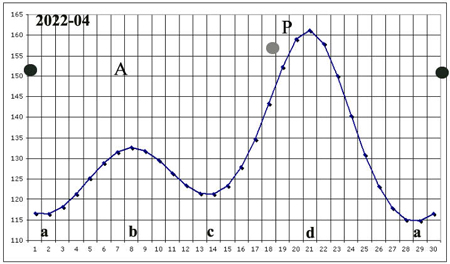Different probabilities in the two phases.

In the cumulative phases (periods b-c; d-a in the graphs), the molecules tend to assume many high energy configurations; in the dissipative phases (periods a-b; c-d), they tend to fall on a few low energy configurations.
So, the cumulative phase turns out to be functional to the dissipative one. Within certain limits, paradoxically, cumulative processes give opportunities to create more order, and to diminish entropy.
I try to say it with images.
It is as if the seed, during the dissipative phase, could refurbish its own house. This can only be done if, during the previous cumulative phase, it had been a bit dismembered into many bricks (into many different energy configurations), because of the temperature. Bricks that in the dissipative phase are put back in an order of low entropy.
If there is not this partial temporary worsening in the cumulative phase, there can not be the recovery of germination capacity in the dissipative phase.
It is a kind of reset, a self-organization. As it takes place in the experiment E.
In the practice.
As a matter of fact, during the cumulative phase which precedes sowing, the farmer will put the seeds in a position to lose some degree of capacity to germinate, by increasing their temperature, but without exaggerating. Of course, within well below the limits of temperature that the seeds can bear.
In this way, he will enable the seeds to trigger a mechanism meant to recover and increase the germination capacity, once they have been sown in the next dissipative phase, or, better still, just before its beginning.
--- 2 ---
Change of paradigm.
The discovery of this cycle is a paradigm shift, intended to suggest better sowing methods to increase yields.
The farmer can freely adopt the sowing procedure recommended here, as it is in the public domain.
Sowing procedure in accordance with the cycle.